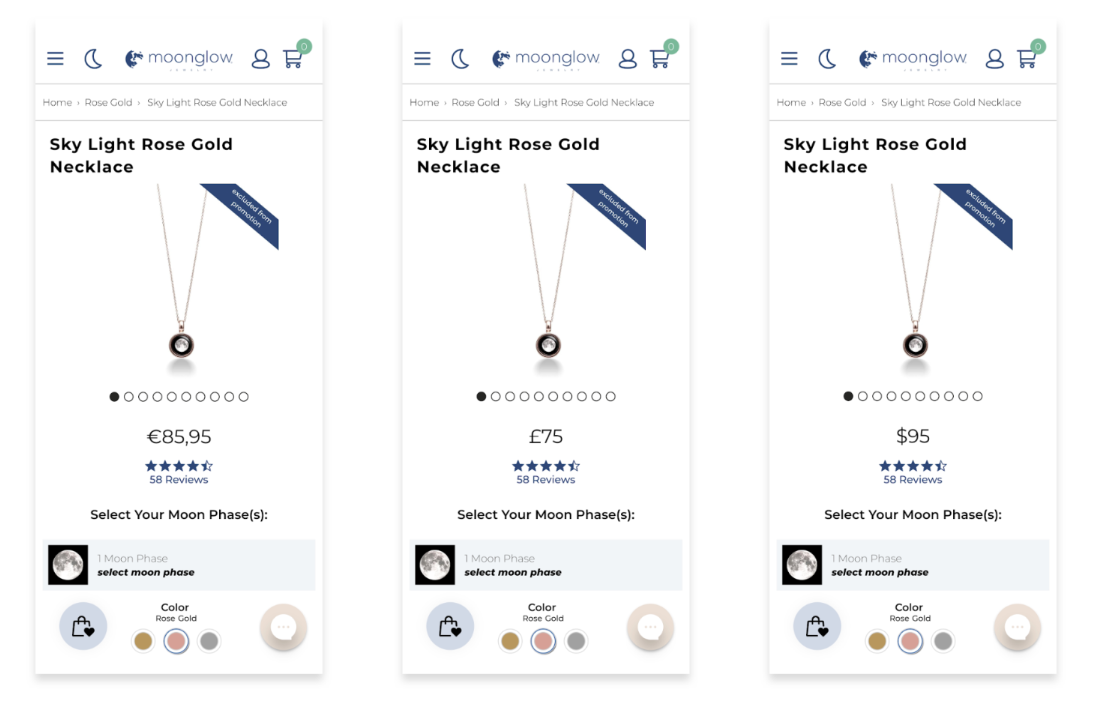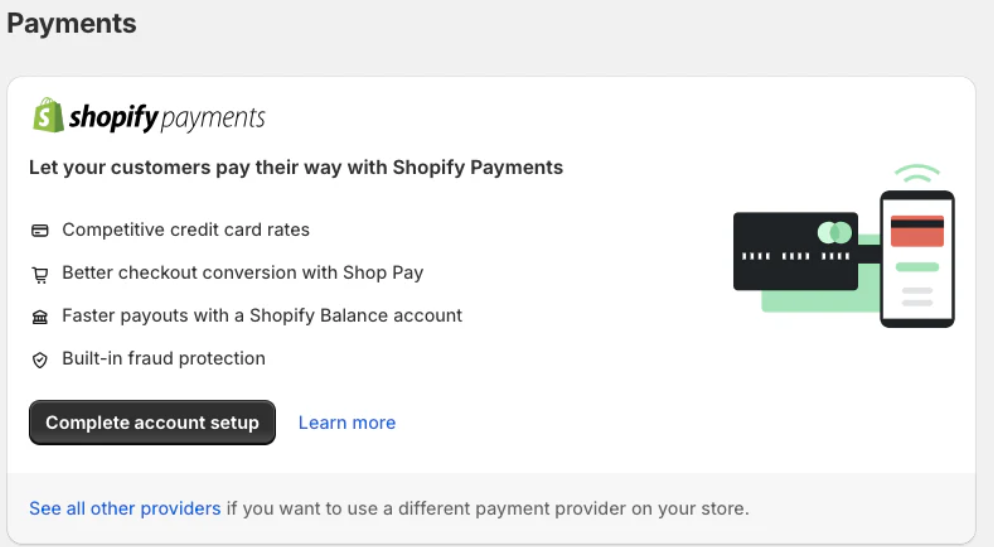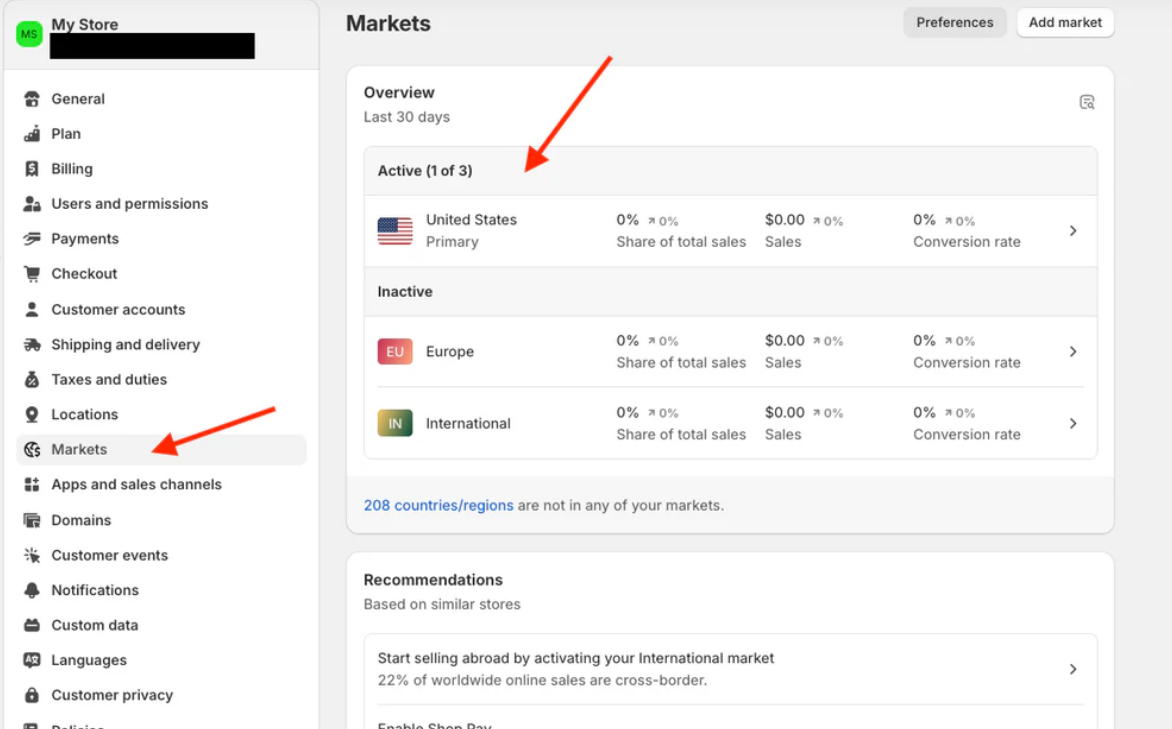Shopify Multi-Currency: Building a Multi-Currency Shopify Store for International Growth

If you’ve ever watched a high-intent visitor bounce for no obvious reason, there’s a decent chance the price tag was the problem - not the product. People hesitate when they have to do mental math or wonder what their bank will actually charge at checkout. Show the right currency, and suddenly the path to purchase feels smooth instead of sticky.
Cross-border sales aren’t a side quest anymore; they’re a growth track. In 2024, global cross-border ecommerce topped $477 billion in sales and keeps climbing. The math is simple: if you want a real shot at global revenue, you have to play local. That’s where Shopify multi-currency comes in.
Over the years, I’ve seen the same pattern repeat: switch on local currencies, round prices sensibly, and watch confidence rise. You’re not “international” because you ship worldwide, you’re international because a shopper in Tokyo sees a fair Yen price, a buyer in Berlin sees VAT-appropriate Euro pricing, and a customer in Toronto doesn’t feel penalized for living north of the border. That’s International ecommerce done like a grown-up.
We’ll keep this practical. By the end of this guide, you’ll know exactly what Shopify multi-currency is, how it differs from those old “convert on the storefront, switch back at checkout” widgets, and the clean, reliable way to set it up so you can scale, without waking up your finance team at 2 a.m.
What Is Shopify Multi-Currency?

Shopify multi-currency lets shoppers browse and pay in their own currency through Shopify Payments and Shopify Markets. That last bit matters.
Plenty of stores have slapped a converter on the product page. Prices look local, until checkout flips back to the store’s base currency. That’s a conversion killer. True Multi-currency Shopify keeps the experience consistent all the way through payment and refunds.
Here’s the simple version of how it works:
- You enable Shopify Payments and activate Shopify Markets.
- You choose the currencies you want to sell in (Shopify supports 130+).
- Shopify converts product prices using current exchange rates and applies currency-specific rounding, so things look “native” (think €29,95 instead of €29.17).
- Customers see stable, sensible pricing in their currency from product page to order confirmation.
Why this matters in International ecommerce: currency is table stakes for trust. When customers don’t have to translate or guess, they move faster. Your returns, discounts, and taxes also line up correctly per market, which keeps operations sane. And because the platform handles the heavy lifting, your team isn’t stuck micromanaging exchange rates.
Benefits of Multi-Currency Ecommerce

I’ve yet to meet a merchant who flipped on Shopify multi-currency and regretted it. The tricky part is often convincing them it’s worth the effort in the first place. Once the data comes in, the case closes itself. Here are the benefits that keep surfacing, across industries and store sizes.
Customer Confidence & Trust
Shoppers don’t like surprises. If a German customer lands on your site and sees €89,95, they know exactly what they’ll be charged. No conversion math. No “will my bank tack on fees?” anxiety. It feels familiar, and that sense of familiarity translates directly into trust.
There’s hard data here: surveys show that more than three out of four online buyers prefer to shop in their own currency. That’s the majority of your audience telling you what they want. Ignore it, and you’re essentially asking people to tolerate friction you could remove in five minutes.
Improved Conversions
When checkout feels local, people finish the job. I’ve seen brands double international conversion rates almost overnight just by letting customers pay in their own currency.
One jewelry brand, for instance, reported a 581% increase in UK conversions after they rolled out Multi-currency for Shopify.
Think about your own habits: if you’ve ever abandoned a cart because you weren’t sure how the final total would shake out on your card statement, you already know why this matters.
Market-Specific Strategies
The beauty of Multi-currency Shopify isn’t just that it shows the right numbers on screen. It also gives you room to adapt pricing to the realities of each market. Think about it: a hoodie that sells at $60 in the U.S. might feel like a bargain in Switzerland but overpriced in India. Without multi-currency tools, you’re stuck with a single global price that works for nobody.
For instance, a watch brand I worked with kept their Euro pricing a notch higher than the U.S. list price, knowing European buyers viewed it as a prestige product. Sales didn’t drop—they actually rose, because the local positioning matched customer expectations.
Another store trimmed margins in emerging markets to stay competitive. The net result? Lower profit per item but far more volume, which balanced the books nicely.
Faster, Leaner Global Scaling
Here’s the piece merchants often overlook: operational efficiency. With Shopify multi-currency, payouts are handled cleanly in your store’s base currency, while customers see the local numbers. That means your finance team isn’t juggling ten exchange rates at month-end just to reconcile sales.
If you step up into Shopify’s Managed Markets, you also offload things like prepaid VAT, discounted shipping lanes, and even guaranteed exchange rates. Suddenly, expanding into a new country doesn’t mean reinventing your workflow—it means toggling on a new market and testing demand.
The Challenges & Drawbacks to Consider
I’m a huge advocate for Shopify multi-currency, but it’s not a magic switch that solves everything. Selling in multiple currencies brings its own quirks, and if you don’t plan for them, they’ll sneak up on you later.
Currency Fluctuations
Exchange rates don’t sit still. They shift with inflation, politics, and plain old market demand. That can cut both ways. If you’re selling in Euros and the currency weakens against the U.S. dollar, your products suddenly feel more expensive to European buyers. If the Euro strengthens, you might be the one taking the hit as your dollar-based payouts shrink.
Shopify updates rates automatically, but that doesn’t erase the risk, it just means you need to check margins periodically. I’ve seen merchants ignore this and end up scratching their heads at a sudden dip in profitability.
Accounting Complexity
Reconciling overseas sales sounds tidy in theory: “We’ll just convert everything back into our base currency.” In practice, it can feel like juggling flaming torches. Each international transaction has to be normalized into a single reporting currency, and tax implications vary depending on where your customers are. If you’re working at scale, get your finance team involved early.
Extra Fees and Risk
Every time you process a payment outside your base currency, someone’s taking a slice. Shopify Payments is competitive on conversion fees, but if you’re using third-party gateways, expect them to charge more. International cards bring higher fraud and chargeback risks. One store I worked with had to tighten its fraud filters after opening up to Southeast Asia, not because the customers were bad actors, but because the payment networks flagged cross-border activity as higher risk by default.
Checkout Surprises
This is less common with Shopify’s built-in tools, but it’s worth calling out: if you don’t configure your Markets settings correctly, you risk checkout defaulting back to your base currency. That’s the fastest way to kill trust—nothing frustrates a shopper more than seeing one price on the product page and another at checkout.
Legal and Tax Implications
Selling in a local currency can trigger local tax obligations. It depends on the country, the sales volume, and the product category. I’m not a lawyer, so I’ll keep it simple: don’t wing it. Always check the compliance angle when you open up a new market.
Step-by-Step Setup for Multi-Currency in Shopify
So, how do you actually get multi-currency Shopify running without pulling your hair out? It’s not rocket science, but the menus can feel a bit buried if you’re new to it. Here’s how I usually explain it.
Step 1: Turn On Shopify Payments

The first thing you’ve got to do is check whether you’ve got Shopify Payments turned on. Without it, nothing else works. I’ve had merchants spend hours messing with settings only to realize they were running their store through PayPal or some other gateway, which doesn’t unlock proper Shopify multi-currency. Go to your admin, poke around in Settings, then Payments, and flip Shopify Payments on if it isn’t already.
Step 2: Set Up Shopify Markets

Next comes Shopify Markets. Think of Markets as the dashboard where you control everything international. Instead of juggling currencies and taxes country by country, Shopify lets you bundle them. So you might group all of Europe together, or maybe you keep Canada separate from the U.S. because of tax rules. This is also the screen where you actually say, “Okay, I want to sell in euros, pounds, yen.”
Step 3: Pick Your First Currencies

Once you’re in there, you’ll see Shopify supports a pretty huge list of currencies - well over a hundred. Don’t go crazy and tick them all just because you can. I usually tell clients: start with the regions where you’re already getting traffic. If your analytics show a lot of visits from Germany, add euros. If you’ve been shipping to Toronto, throw in CAD. Trying to cover twenty currencies on day one just gives your accounting team nightmares.
Step 4: Decide on Automatic or Manual Rates

Shopify will happily handle exchange rates for you, updating them in real time. For most stores, that’s perfect, you don’t have to think about it. But I’ve worked with a couple of brands where the swings in the euro or yen created some awkward price jumps. If that’s a concern, you can lock in manual rates instead. It’s a bit more work, but the upside is stability. Your €95 shirt stays €95, no matter what’s happening in the markets that week.
Step 5: Set Rounding Rules

This is one of those small details that customers notice subconsciously. In the States, people are used to $19.99. In Germany, €19,95 looks right. In Japan, round numbers like ¥12,500 tend to feel more natural. Shopify lets you build these habits into your setup. Without rounding rules, you sometimes end up with clunky numbers that scream “converted,” and that chips away at trust.
Step 6: Add a Currency Selector

Even if your site guesses where someone’s located, it’s polite to give them the option to switch. A Canadian traveling in London might still want to check prices in CAD. Some themes already come with a selector baked in; others need a tweak in the theme editor or a lightweight app. Either way, it’s worth adding. It gives shoppers a sense of control, and that usually means fewer abandoned carts.
Step 7: Test Everything
Here’s where I’ve seen the most mistakes. Merchants set everything up, glance at the storefront, and call it a day. Then a customer messages support: “Why did shipping switch back to dollars at checkout?” To avoid that, use a VPN, pretend you’re in different countries, and run through the full flow, from browsing to checkout to refunds if you can. It’s the only way to be sure your multi-currency Shopify setup feels consistent all the way through.
Multi-Currency in Headless Commerce
Headless setups add a whole new layer of fun to multi-currency Shopify. You’re not just flipping a switch in the admin anymore - you’re wiring currencies into your storefront logic. It can feel intimidating at first, but honestly, once you understand how Shopify handles it, it’s pretty straightforward.
Country Selectors Are Your Friend
In a headless build (say you’re using Hydrogen or Next.js), you can’t just rely on the default Shopify theme currency selector. You’ve got to create your own way for shoppers to say, “I’m in Canada, show me CAD.” The common approach is to keep a little file with your supported countries and currencies - something static like countries.js. That keeps it fast and SEO-friendly. No one wants a country selector that takes forever to load.
Detecting Locale Automatically
Here’s a trick I’ve used: Shopify gives you a utility called getLocaleFromRequest. It sniffs the shopper’s location from their request and lines it up with your Markets setup. So, if someone in Paris lands on your site, it knows to serve euros and French content by default. You still want a manual selector (people travel, VPNs exist), but this automatic layer gives most folks the right experience without them lifting a finger.
Keep Carts and Checkout in Sync
One mistake I’ve seen more than once: the storefront shows one currency, but when the customer hits checkout, it flips back to the store’s base currency. That happens if you don’t wire your headless cart properly into Shopify’s APIs. Always test the full flow: product → cart → checkout. If the currency isn’t sticking, fix it before you launch.
Think Performance and SEO Too
It’s easy to get lost in the tech, but don’t forget the basics. Static country lists load faster, local URLs with hreflang tags rank better, and every extra API call you make slows things down. I’ve worked on headless builds where over-engineering the currency switcher tanked performance. Keep it simple: fast, predictable, and clear.
Shopify Multi-Currency: Scale Globally
For most stores, flipping on Shopify multi-currency is pretty painless. Turn on Shopify Payments, add a couple of currencies, test it, and you’re in business. But once you start layering things like custom price lists, VAT in Europe, or a headless setup, it’s easy to trip over little details.
That’s the point where calling in backup makes sense. A developer or agency that’s done this before can usually spot the problem in an afternoon instead of you burning a week on trial and error.
Big picture though? If you’re serious about international ecommerce, you can’t dodge this. Customers expect to see their own currency. They trust it. They buy more when it’s there. Shopify gives us the tools, but it’s on us to use them well.
My advice: start simple. Pick the markets where you’re already seeing traffic, add those currencies, and get the checkout flow rock solid. Then build from there. Do that, and you’re not just “shipping worldwide” - you’re selling locally, worldwide.
Ready to dive in? Find your Shopify Expert today.
.svg)








.svg)